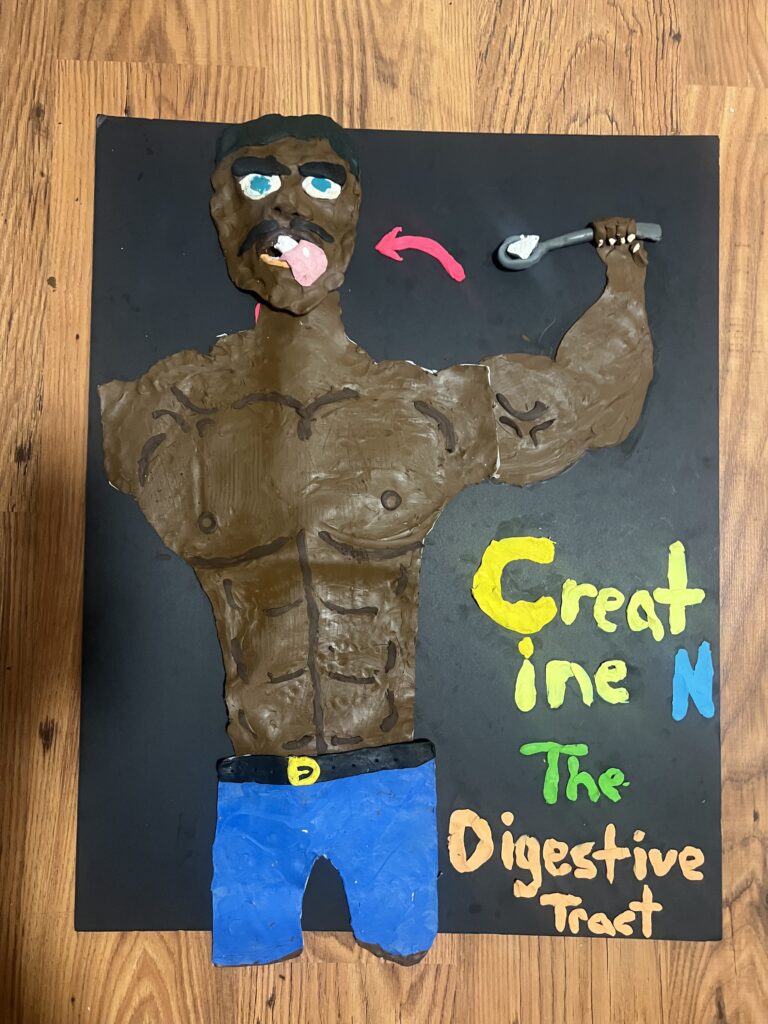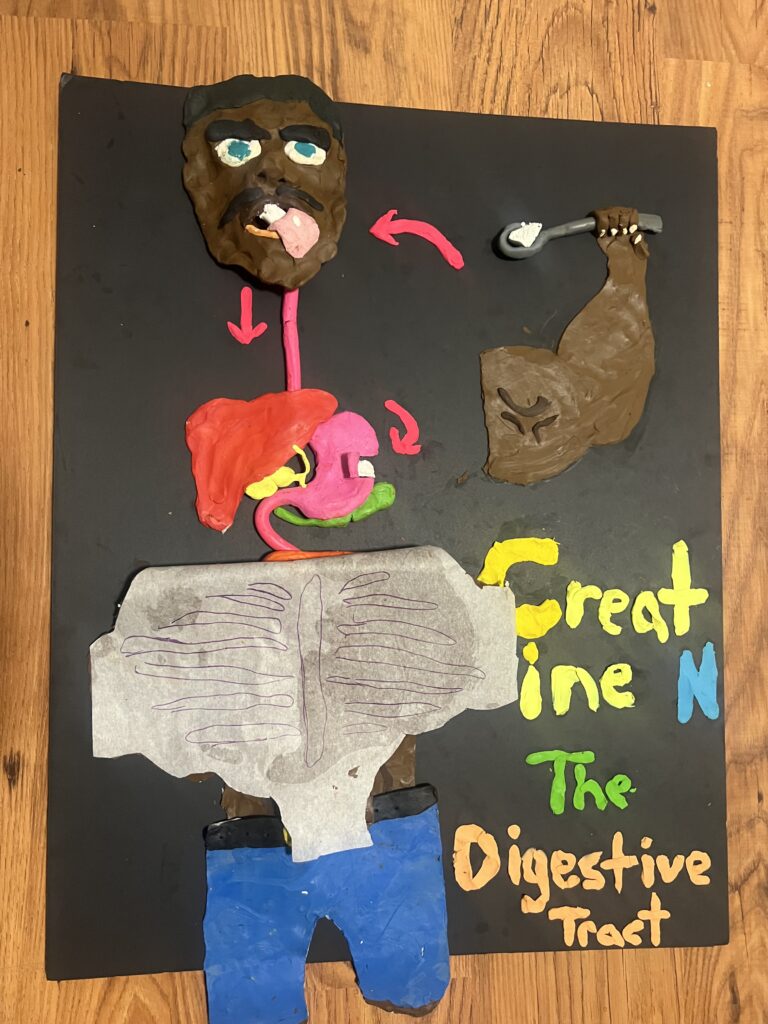Through creatine supplementation muscles can output work at a higher intensity for a greater duration of time. This project shows the route in which creatine takes through the digestive tract to provide optimal ATP production for muscles.





Through creatine supplementation muscles can output work at a higher intensity for a greater duration of time. This project shows the route in which creatine takes through the digestive tract to provide optimal ATP production for muscles.




Isaiah’s project is a clay rendering of creatine’s path through the digestive tract, concluding with its effect on ATP production. The first photo is a visual of a bodybuilder ingesting creatine through nutrition supplementation. Once creatine enters the oral cavity, it is met by saliva before being swallowed. Isaiah’s photos have arrows demonstrating how creatine powder travels through the esophagus, the tube connecting the pharynx to the stomach. The esophagus contracts rhythmically to transport the creatine. Arrows highlight the stomach, denoting that creatine is being churned, mixing with acids and enzymes. Continuing along, creatine reaches the small intestine. Enzymes from the pancreas and bile from the liver are utilized in the duodenum of the small intestine to finish breaking down molecules. The jejunum and ileum are responsible for absorbing the bulk of creatine. The project ends at the large intestine, where the last bit of absorption will occur before waste is consolidated.
Creatine is a naturally occurring substance found in muscle cells. Its role is to assist muscles in producing energy during exercise. Creatine is converted to creatine phosphate during the digestive process. The creatine phosphate is converted once more to adenosine triphosphate (ATP). Once in ATP form, the body can use it during explosive exercise. Supplementing creatine can lead to more strength being available during workouts, as your body will have increased ATP within its cells to use during high levels of energy expenditure.